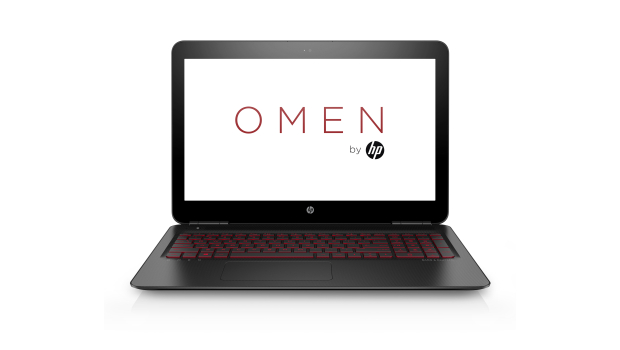“Challenging and somewhat volatile” – four words that perhaps best summarise HP Inc’s first foray into single life after 76 years.
With the ink on the divorce papers barely dry, as Hewlett Packard Enterprise also goes it alone, the tech giant is fighting back following 12 months of strife, repositioning its focus in light of increased market pressures.
As HP CEO, Dion Weisler, explained during the vendor’s third-quarter financials, on the whole, the company has “delivered on our financial commitments” for the three months ending 31 July.
“However, with the markets remaining challenging and somewhat volatile, we have more work to do,” he cautioned.
“We will keep our eye on cost controls, while continuing to focus on executing our strategy, protecting our core business through solid execution, delivering our growth initiatives and investing in category-creating opportunities for the future.”
In reporting overall revenue and gross profit declines of 3.8% and 6.6% to $11.9 billion and $2.2 billion, Weisler is correct to be cautious.
Illustrating the ongoing challenges for HP, troubles remain particularly in midrange PC price bands where competition among the largest vendors is intensifying as the global PC market shrinks, coupled with challenges in implementing changes to the vendor’s printing supplies inventory and go-to-market strategies.
Yet revenue decline was slower than in the past, and operating income and operating margin improved in tandem with its resurgent Personal Systems segment.
Overall operating income climbed 10.9% year-on-year to $1.1 billion in Q2 2016, and overall operating margin improved 130 basis points year-on-year to 9.4%.
Headcount reductions and other restructuring initiatives helped reduce operating expenses, but stronger margins and greater profits in the personal systems segment were among the primary drivers behind the overall increases.
HP’s new hero
“Rebooting its PC gaming brand and renewing its focus on the premium notebook PC segment in calendar Q2 2016 highlights how HP intends pursue long-term, lucrative growth in a challenging PC market,” said technology business research principal analyst Jack Narcotta.
“Successfully executing on these strategies in Q2 2016 fostered a significant turnaround in consumer PC markets in Q2 2016 for HP, allowing this segment to counter some of the effects of declines in the midrange commercial PC and printing supplies product segments that generate the bulk of the vendor’s revenue and profits.”
During the quarter, and globally speaking, HP reported increased PC market share, to nearly 21%, improving its PC average selling price (ASP) despite heightened competition from Asus, Dell and Lenovo.
“Consumer demand for premium PCs, particularly thin-and-light and gaming-ready notebook PCs, will continue, a trend that validates HP’s push into the premium PC segment,” Narcotta said.
“This will promote continued margin improvement and profit recovery for HP through the first half of 2017 even as overall revenue declines.”
Looking ahead, Narcotta forecasts revenue growth between 5 to 15% year-on-year each quarter through 2017 in premium consumer notebook PC and gaming PC segments, which promise greater profits per PC sold and are enticing Windows PC OEMs to enact new strategies to capitalise on these lucrative segments.
For Narcotta, HP’s new initiatives such as its revamped OMEN gaming PC brand and Spectre premium notebook PCs are “clear signs” that the vendor is aware of this trend and the opportunities within its existing customer base and addressable markets.
Meanwhile, the vendor’s personal systems’ revenue and operating income recovered 0.1% and 57.8% year-on-year to $7.5 billion and $333 million, respectively, in Q2 2016.
“This shows the potential of excelling in premium and gaming segments in which the typical 2-in-1 or gaming PC sale generates two to three times more revenue and profit compared to traditional notebook PC form factors,” Narcotta explained.
Delving deeper, unit shipments were up 4% year-on-year, to 12.8 million, fuelled largely by greater demand for notebook PCs, and consumer revenue climbed 8% year-on-year to an estimated $1.7 billion.
“Greater scale in premium PCs will also help strengthen HP’s brand, increase its customer loyalty, and raise awareness and purchasing consideration of high-margin peripherals and services in its portfolio,” Narcotta added.
While fostering commercial PC growth is emerging, somewhat uncharacteristically, as a challenge – the hardware vendor also cited a greater mix of Chromebooks in its commercial PC mix, particularly in education and finance markets, as a detractor to commercial PC revenue and ASP.
Consequently, Narcotta believes HP’s move into the premium PC segment will “shield the company” from this trend, as well as most of the effects of greater competition among Asus, Dell and Lenovo for customers in a shrinking global PC market.
“HP’s strategy to architect its business to endure declines in midrange and entry-level devices as it formulated its strategy to capitalise on growth in the premium PC market was a savvy move by the company, and has strengthened HP Inc.’s competitive position relative to its largest competitors,” Narcotta added.
“Revenue recovery, slowing gross profit erosion and operating income gains in a declining global PC market illustrate the potential long-term impact on Personal Systems, as well as HP overall, should it continue to successfully execute on its PC strategy.”
IDG News Service




Subscribers 0
Fans 0
Followers 0
Followers